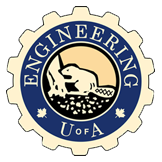
Professor and Nanofibre Chair in Forest Products
Contact information:
Department of Civil and Environmental Engineering
Materials Engineering
University of Alberta
7-273 Donadeo Innovation Cntr for Engineering
Edmonton, Alberta, Canada T6G 1H9
Phone: (780) 492-6295
Email:yaman.boluk@ualberta.caa
Research Interests
- Nanocellulose fibers
- Industrial applications of cellulose and hemicellulose derivatives
- Colloids
- Interfaces and rheology
Research program
Preparations and applications of cellulosic nanofibres
The discovery of cellulose by Anselme Payen goes back to 1838 and it has been used as a raw material for the preparation of polymers and plastics since 1870. Later advancement of synthetic polymers from petrochemicals eclipsed the utilization of cellulosic polymers and plastics. Nevertheless cellulose becomes an attractive material again for several reasons. First of all, it is renewable, carbon neutral and also available from abundant wood and other plant fibres supplies. Secondly it is inherently non-toxic and biocompatible for the human body and biodegradable. And last but most importantly, cellulose can be converted to nanosized fibres which reveal unique bulk, surface, and colloidal properties. The goal of this research program is to capture the opportunities by preparing and utilizing cellulosic nanofibres which offer unique supramolecular structures combined with high crystallinity, hydrophilicity, chirality, chemical modification potential and structure-forming capacity.
Preparations of nanofibres
- Nanocrystalline cellulose (NCC): Elongated crystalline rigid rod-like nanoparticles (diameter: 4-10 nm, length: 150-300 nm) which are described as NCC are produced by acid hydrolysis of chemical pulp. The research program on NCC preparation processes are also aligned with the planned Alberta Innovates-Technology Futures pilot plant.
- Nanocellulose fibers: Flexible and entangled nanofibres (diameter: 4-10 nm, length: 500-1500 nm) consisting of alternating crystalline and amorphous strings, which are called as nanocellulose fibers are obtained mostly by mechanical treatment with some acid or enzymatic hydrolysis. This part of the program investigates generation of nanocellulose mostly from agricultural fibers by mechanical refining and enzymatic process.
- Electrospinning of cellulose nanofibres: Cellulosic nanofibres can also be produced by electrospinning of cellulose derivative solutions. Electrospinning of specially derivatized cellulose ethers are the interest of the program.
Applications of nanofibres
- Rheological properties of semi-dilute nanocrystalline cellulose suspensions
- Surface modification of nanocellulose for development of advanced composites.
- Transport phenomena through cellulosic nonwoven nanofibre membranes
- Liquid crystals and colloidal properties cellulose nanocrystal dispersions.
- Polymer assisted fabrication of self-assembling cellulose nanofibres in multilayered structures.
- Applications of cellulose nanocrystals in drug delivery and tissue engineering


